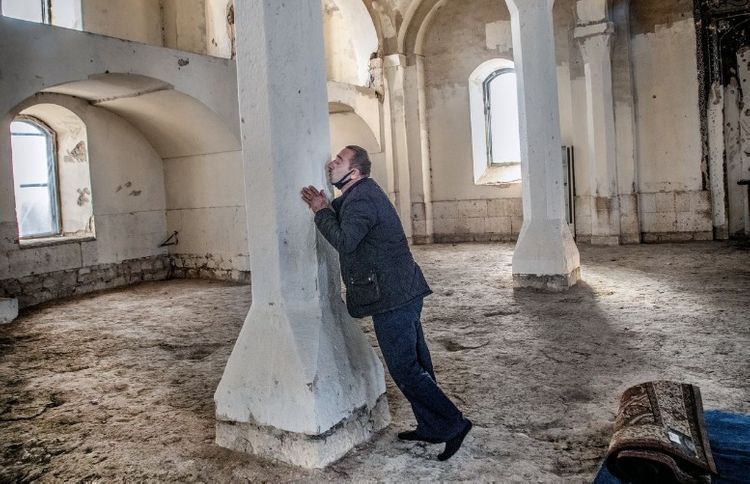An American business-focused, English-language international daily newspaper based in New York City the Wall Street Journal has prepared reportage about Azerbaijan's liberated territories, IDPs fled from Nagorno Karabakh and destruction as a result of Armenian aggression, APA reports.
The employee of the WSJ Ann Simmons writes that some 30 years on from the war that saw Armenian forces drive hundreds of thousands of Azeris from their homes in and around the conflict-torn enclave of Nagorno-Karabakh, many hope they can soon return after Azerbaijan liberated its territories in a counteroffensive last fall.
Sayali Pashayeva, and others like her, dream to go to their homes.
“I thank God for allowing me the possibility of returning to die on my own land,” said Mrs. Pashayeva, 74 years old, on her first visit back to Agdam, once home to her family and 40,000 other people," she said.

The Pashayev family lived in a two-story home before the conflict forced them to lee to a tent city near the Azeri capital of Baku.

Juma mosque is the only building left standing in Agdam, about 3½ miles from the border with Nagorno-Karabakh.
“For 30 years, we have waited for this moment,” Mrs. Pashayev’s son, Alastun Pashayev, 45, said. Azerbaijan secured control Agdam and several other regions in and around the disputed enclave during a bloody six-week battle before Russia brokered a cease-fire in November.
The WSJ has touched upon the scale of the rebuilding in the territories: "Tahir Mirkisili, chairman of an economic planning and business committee in the Azeri parliament, says that over 150,000 homes were destroyed in the areas Azerbaijan recaptured last year, along with 9,000 public buildings, including 700 schools.
Land mines and unexploded ordnance still pepper the landscape. With rail and airport infrastructure long destroyed, the only way in is by road, making it harder to restore public services and rebuild shattered towns."
In the reportage is talked about another IDPS from Azerbaijan's Fuzuli region:
"Elkhan Khanalizade, a screenwriter, was 13 years old when fighting arrived in his village in the southern region of Fuzuli. The youngest of six brothers, he lived in the family’s two-story eight-room house, on 5 acres of land where they grew apricots, berries, silk trees and an array of flowers, including roses. His father worked in administration at a winemaking factory. There was a mosque in town and a place to watch movies, even American films, such as Tarzan. “Everyone knew each other,” Mr. Khanalizade recalled.

Elkhan Khanalizade was 13 when lighting arrived in his village in the southern region of Fuzuli.
The subsequent conflict claimed some 30,000 lives and displaced hundreds of thousands of people by the time of a cease-fire in 1994.
Some 800,000 Azeris have said they want to return, according to a government committee supporting repopulation efforts.
Hikmet Hajiyev, Azeri President Ilham Aliyev’s chief foreign-policy adviser, said it has become “a matter of pride.”"


